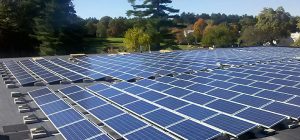SMART Program Frequently Asked Questions
Below are some of the most frequently asked questions about the Massachusetts SMART Program. For more information and an overview of the program, visit our SMART Program page.


When did the program start?
The SMART program fully replaced SREC II in November 2018.
When will the program run out?
The SMART was doubled from its original capacity in April 2020. SMART will now fund projects until the capacity of 3,200 MW total is reached. There is no set end date; the program will run until capacity is reached.
Do I have to own my own solar panel system?
You do not have to be the owner of the system to benefit from this program. Organizations that choose to finance their system with options like solar PPAs or leases can still benefit through expected rate reductions passed on from the actual system owner.
Does SMART replace net metering?
The SMART program is separate from net metering credits, and incentive income will be delivered separately from the system owner’s utility bill.
How long is the reservation period?
Your solar solar project must be completed within a 12 months of being accepted by SMART to remain eligible for funds.
Is there a sunlight/shade requirement?
No, there is no maximum amount of shade or minimum amount of sunlight needed for a solar panel system under SMART. Since customers are paid based on how much solar energy they produce, it will benefit the owner to install panel systems with optimal conditions.
How long does the program last?
Customers will receive SMART payments for 10 years for projects under 25 kW, and for 20 years for projects over 25kW.
Project under 25 kW will receive payments for 10 years, and projects over 25 kW will receive payments for 20 years.
What are adders and subtractors?
Adders and subtractors are applied to the base rate, which is the rate per kilowatt hour that customers are paid for the energy they produce.
Adders increase the base rate and are meant to incentivize certain behaviors or types of panel systems. For example, putting solar panels on a roof, parking lot, or landfill would all increase how much a customer could make through the SMART program. Buying a solar battery along with the panel system would also be considered an adder.
One the other hand, subtractors are meant to disincentivize, and therefore reduce the base rate. Cutting down trees in a forest to build solar panels would be considered a subtractor.


